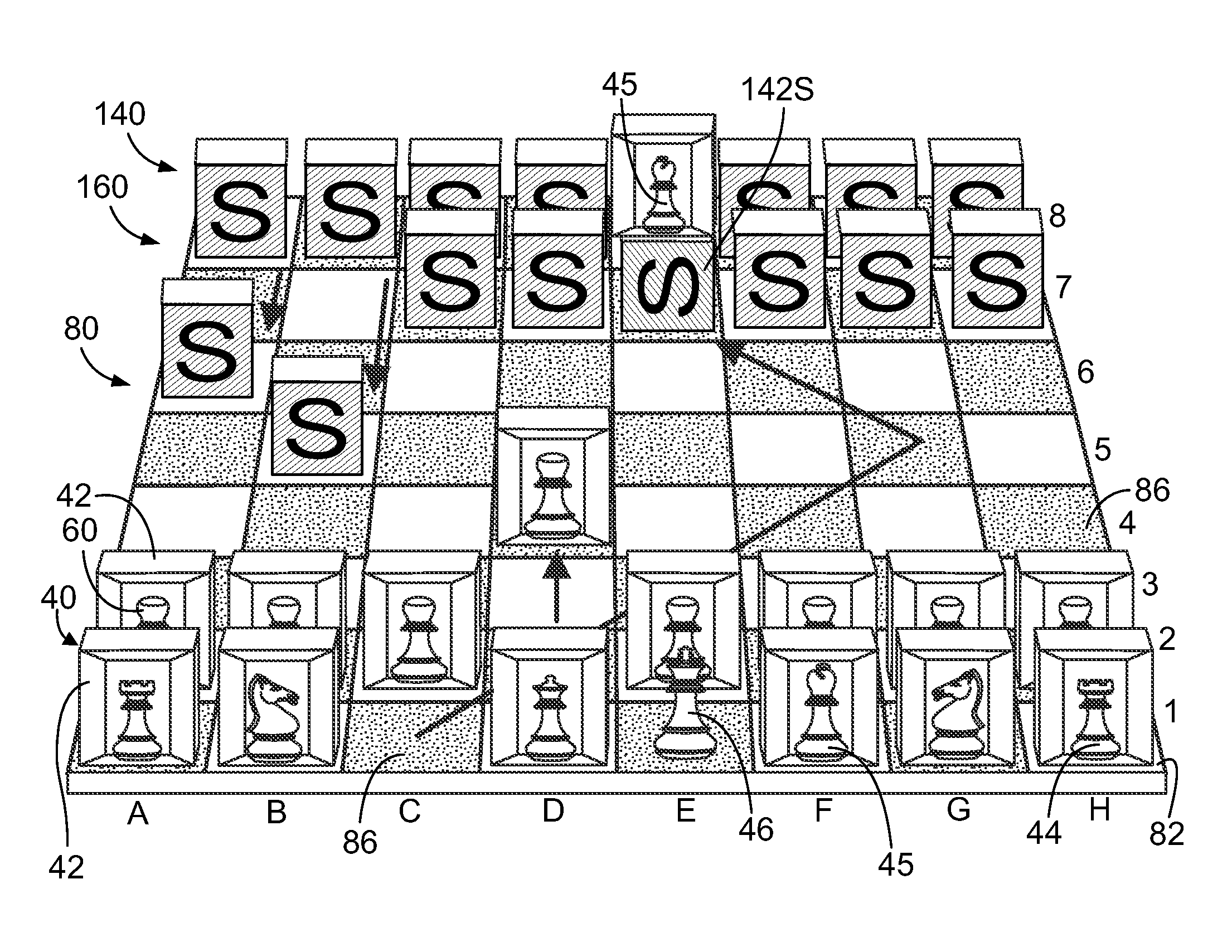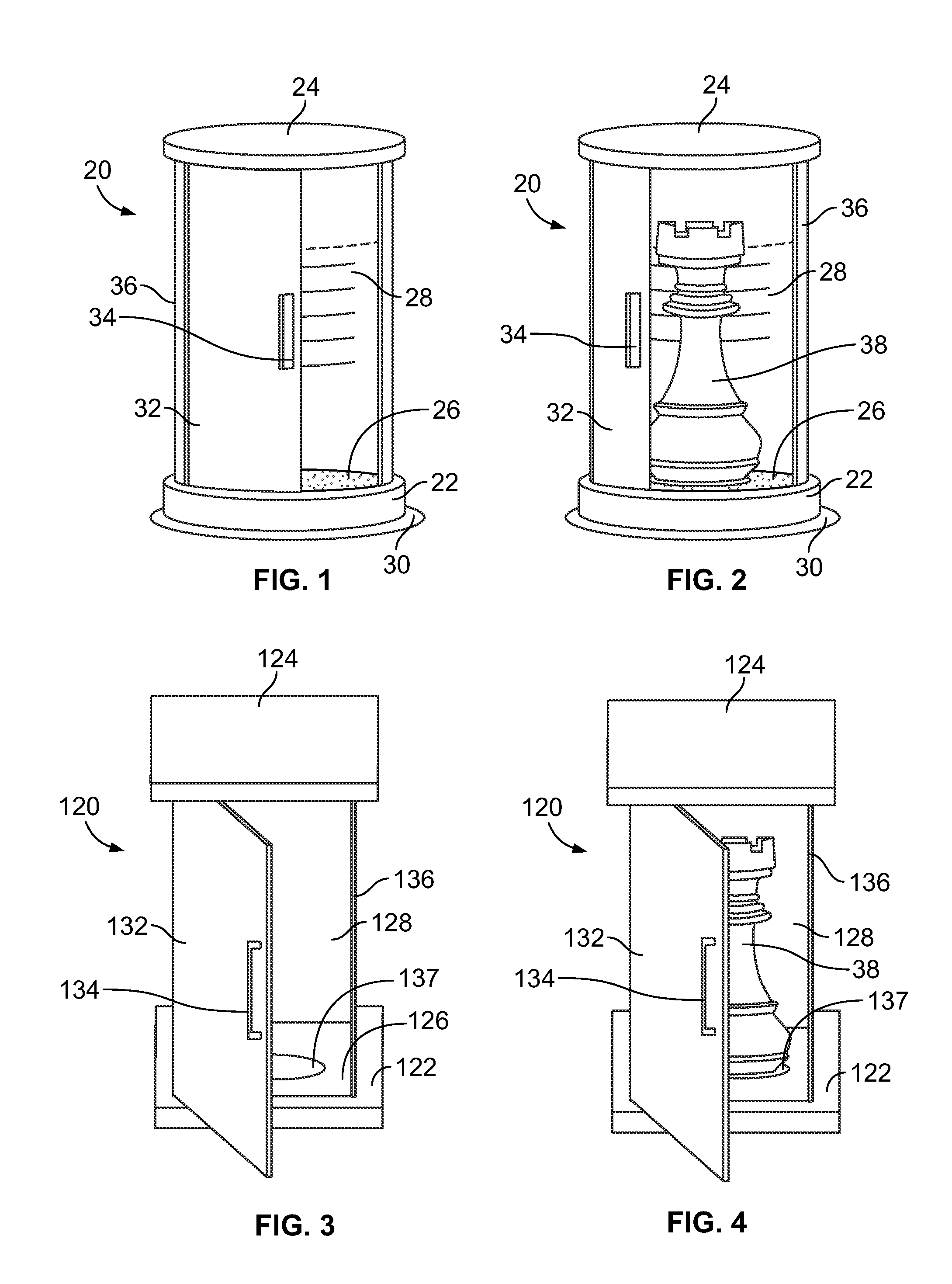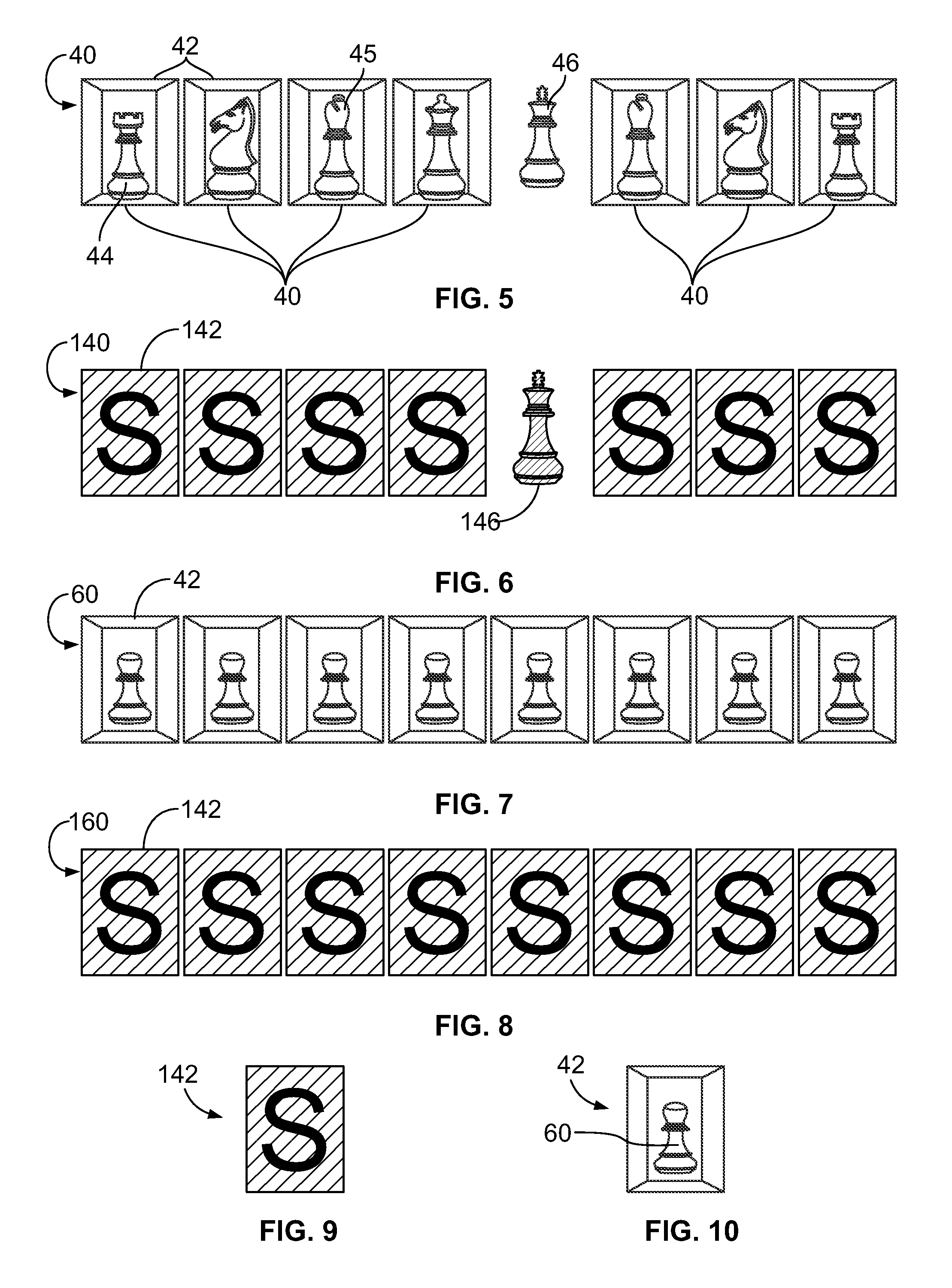Strategy, and training game and method for enhancing memorization and decision making
a training game and memorization technology, applied in the field of strategy games, can solve the problems of reducing the surface area of the game, ignoring the reality of business, military or other contested endeavors, and often less than 100% accurate received information, etc., and achieve the effect of small surface area
- Summary
- Abstract
- Description
- Claims
- Application Information
AI Technical Summary
Benefits of technology
Problems solved by technology
Method used
Image
Examples
Embodiment Construction
[0042]The following description is of a chess-like game utilizing variations of chess as disclosed and claimed herein. Although the game is described relative to traditional chess, it is obvious to a person of ordinary skill in the art that these modifications of the game may take many variants of chess, and as many as are appropriate to provide for the training method disclosed and claimed herein are considered to be a part of the invention. The chess-like game involves concealed game pieces and the players play chess without complete information of their opponent's position.
[0043]The game includes covers for the pieces, hereinafter referred to as shells, and once the game pieces are disposed in the shells, the game pieces are concealed from view of the opponent. All of the chess pieces, except for the King, and optionally other pieces, are placed inside the shells. The same basic tenets of traditional chess and rules thereof remain in effect. Preferably, at least for the earlier p...
PUM
 Login to View More
Login to View More Abstract
Description
Claims
Application Information
 Login to View More
Login to View More - R&D
- Intellectual Property
- Life Sciences
- Materials
- Tech Scout
- Unparalleled Data Quality
- Higher Quality Content
- 60% Fewer Hallucinations
Browse by: Latest US Patents, China's latest patents, Technical Efficacy Thesaurus, Application Domain, Technology Topic, Popular Technical Reports.
© 2025 PatSnap. All rights reserved.Legal|Privacy policy|Modern Slavery Act Transparency Statement|Sitemap|About US| Contact US: help@patsnap.com



